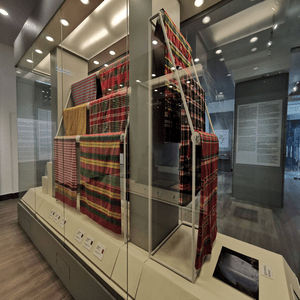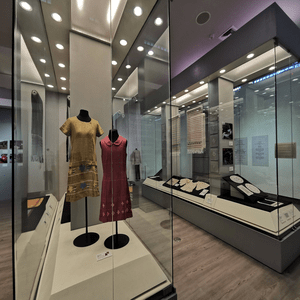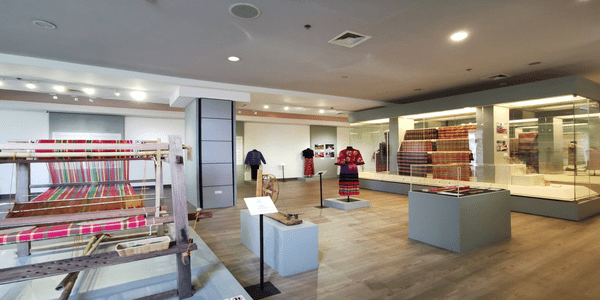| ‹ | Habol Panay Gallery |
› |
|---|
The “Habol Panay: The Woven Artistry of Western Visayas” gallery of National Museum Western Visayas features the diverse textile heritage of Panay and Negros Islands through the hablon weaving of Iloilo and Antique, piña-seda (pineapple-silk) weaving of Aklan and Antique, silk production and silk weaving of Negros Occidental, panubók (embroidery) of indigenous peoples group Panay Bukidnon, bobbin lacemaking of Sta. Barbara, Iloilo, and embroidery of Asilo de Molo, a hospice for the elderly.
This exhibition features the textile heritage of Region 6. It’s an offshoot of the Hibla ng Lahing Filipino, a permanent textile gallery in the National Museum of Anthropology in Manila. The National Museum of the Philippines, in partnership with the Office of Deputy Speaker Loren Legarda, is setting up regional textile galleries nationwide to highlight the diverse handwoven textiles and indigenous fibers of the Philippines.
Haból is a Hiligaynon word that means “to weave”. Weaving is a specialized industry that has been in place even before the arrival of the Spaniards. Early weavers utilized indigenous fibers in making their clothes for daily wear, trade or important occasions such as birth of a child, wedding or funeral of family members.
Weaving communities in Western Visayas flourished during the Spanish colonial period, especially when Iloilo Port was opened to international trade in 1855. Iloilo was the textile capital of the Philippines in the mid-1800s employing thousands and exporting highly prized handwoven textiles to Europe and neighboring provinces. But the industry suffered a decline when the trade shifted to sugar.
The exhibition is divided into different sections: the raw materials used in weaving including the silk production in Negros Occidental, the hablon weaving of Iloilo and Antique, the traditional embroidery of Panay Bukidnon, the Bobbin lace-making of Sta. Barbara, the embroidery of Asilo de Molo, and the piña weaving of Aklan.
The Habol Panay Gallery is an exhibit in the National Museum Western Visayas that showcases the weaving traditions of the Panay Island in the Philippines. The exhibit features a collection of textiles and traditional garments, as well as looms and other weaving tools.
The exhibit highlights the various weaving techniques used by the different indigenous communities in Panay, such as the hinabol and patadyong of the Panay Bukidnon, the piña and abaca textiles of the Aklanons, and the hablon and patadyong of the Ilonggos. It also presents the cultural and historical significance of these textiles in the daily life and ceremonies of the communities.
One of the highlights of the exhibit is the display of the different types of looms used in Panay, including the backstrap loom, the foot loom, and the pedal loom. Visitors can also see weavers in action and observe the intricate process of creating these textiles.
The Habol Panay Gallery is known for its comprehensive and educational presentation of the weaving traditions of Panay. It provides visitors with a deeper understanding and appreciation of the cultural and artistic heritage of the region, and highlights the importance of preserving and promoting these traditions for future generations.









